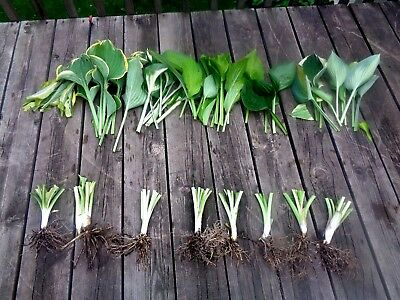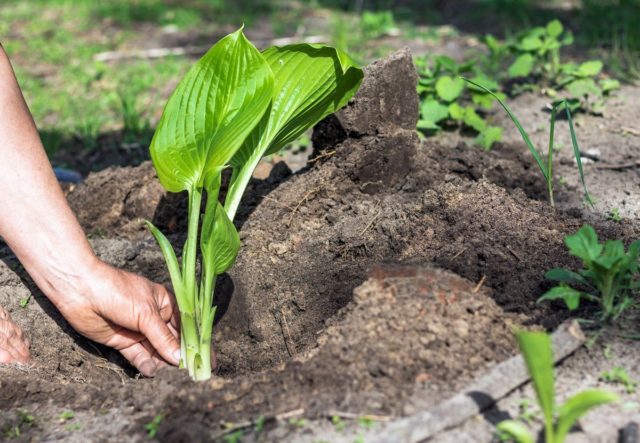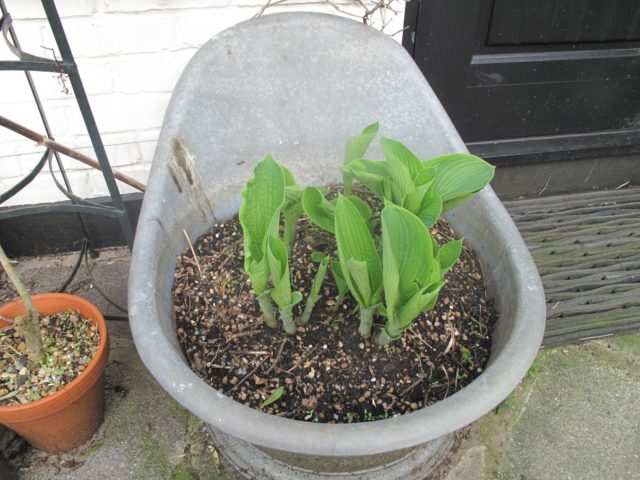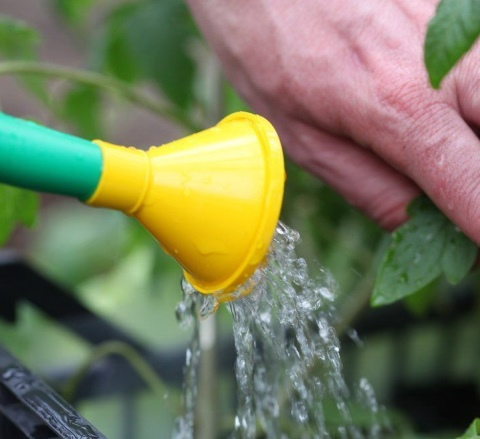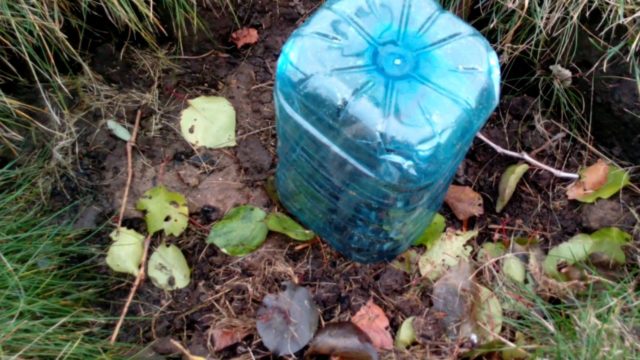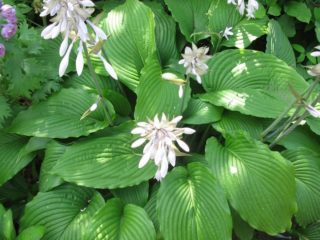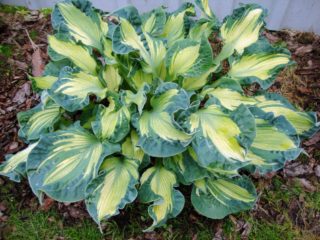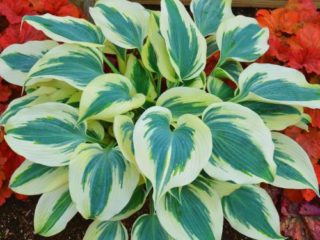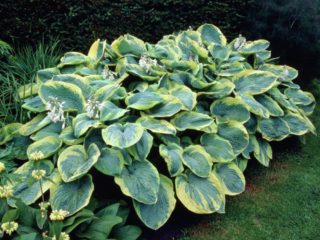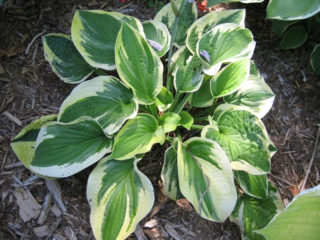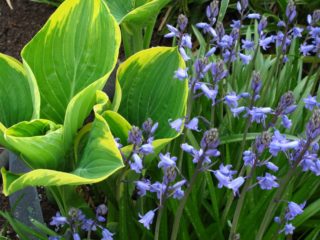Content
Even a novice florist will be able to propagate the host on his own plot on his own. The easiest way to achieve this goal is by dividing an adult bush or grafting. The "queen of the shadow" is unpretentious, tolerates these procedures quite easily and usually takes root well in a new place. A more troublesome and time-consuming way to reproduce a hosta is to grow it from seeds. In nurseries specializing in these plants, methods of artificially obtaining them "in vitro" are popular: from the kidney (microclonal) or from cells of educational tissue (meristem). To assess the advantages and disadvantages of each of these methods of breeding hosts, it is worth examining their features in more detail.
How the host reproduces
The choice of the method of reproduction of hosts depends largely on its characteristics. In particular, you should take into account:
- whether it is a specific plant or a bred variety;
- the bush grows quickly or slowly;
- large or small leaves.
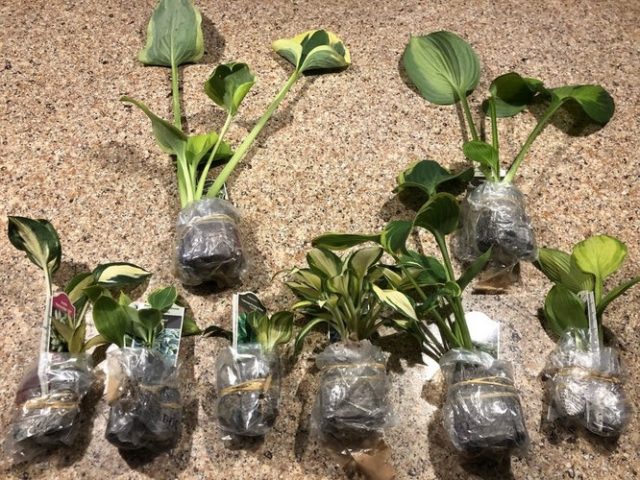
When choosing a method for breeding hosts, it is necessary to take into account the features that characterize a particular variety or species.
Reproduction of hosts, like most of herbaceous perennials, can be performed:
- seeds;
- vegetatively.
In the first case, seeds collected in late summer or early autumn are sown in containers to obtain seedlings. After the appearance of the first leaves, the seedlings dive into individual pots and continue to grow indoors, creating and controlling favorable conditions for them. A transplant into the ground on a seedling bed is usually carried out in the second year and only for 3-4 years is transferred to a permanent place.
This method is most often used for growing slow-growing host species (for example, Tokudama). As for hybrid plants, not all of them can set seeds with ease. In addition, the probability that the seedlings will retain and show all the characteristics of the variety is extremely low.

Slow-growing species hosts are usually propagated by seed
Most often, the reproduction of varietal hosts is carried out vegetatively - growing them from viable organs separated from the mother plant. This is done by:
- dividing the bush;
- rooting cuttings (young shoots with roots);
- propagation by leaves;
- obtaining plants "in vitro", or "in vitro" (microclonal and meristem methods).
The most popular breeding method for hosts is dividing the bush. It is usually used for mature plants at the age of 5-6 years, while simultaneously rejuvenating them. The optimal period for division is spring and early summer. However, reproduction in this way of some hosta species (Siebold, Tokudama) is allowed only in autumn, since their root system develops only after the leaves open. The bush, along with the rhizome, is dug out of the ground, washed with water, examined for damage and removed, then cut at the base and the cuttings are planted in new places. Slow-growing hosts are best cut in half, while fast-growing hosts can be cut into 3-4 smaller pieces.
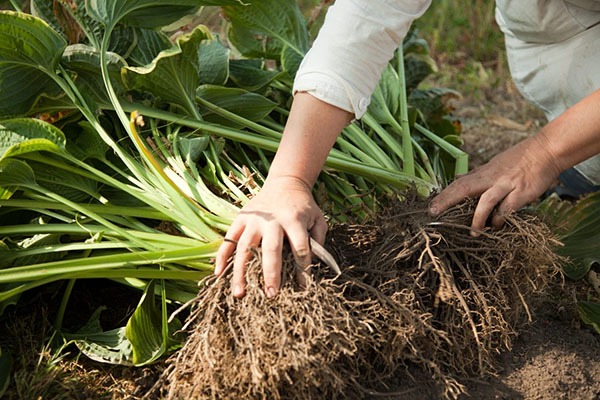
Dividing the bush allows you to propagate and rejuvenate an adult hosta
How to propagate hosta by cuttings
Another method of breeding hosts, often practiced by gardeners, is by rooting cuttings. A step-by-step description and a photo will help to present all the subtleties of this procedure, the essence of which is growing a new plant from a shoot with a part of the rhizome separated from the parent specimen.At the same time, as well as as a result of dividing the bush, the young hosta retains all the characteristics inherent in the variety. However, digging up the bush of the mother plant is not required in this case.
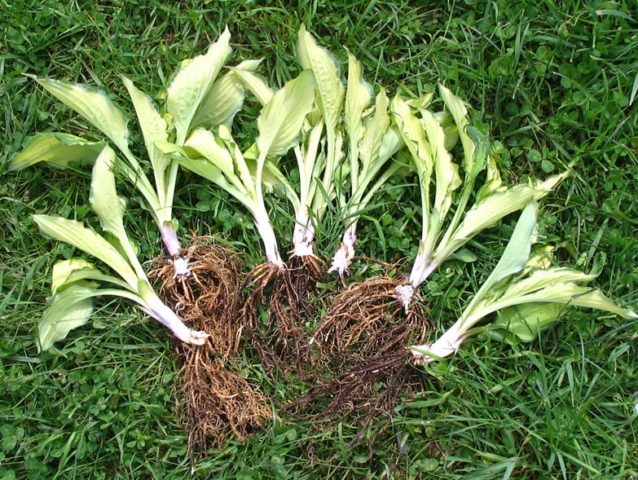
Propagating the host by cuttings is no more difficult than dividing the bush, but you do not need to dig it out
Recommended timing
Reproduction of hosts by cuttings is recommended to be performed:
- in the middle of spring;
- in summer, late June and early July.
It usually takes 3-4 weeks for the shoot to take root.
Cutting and preparing cuttings
Both adult and young hosta bushes can be propagated in this way. The cutting should be prepared just before rooting.
For this you need:
- carefully separate the shoot from the bush with a young leaf rosette and a piece of rhizome (the so-called "heel");
- cut off the top of the leaves from the cutting 1 / 3-1 / 2, which will contribute to better rooting and reduce moisture evaporation.
Planting hosta cuttings in the ground
The resulting cuttings can be planted in open ground or in a container. It is important that the soil for the hosta is nutritious, light, and is good for air and water. For container planting, choose a container with holes in the bottom for good drainage.
Then you should do this:
- plant the cutting to a depth of about 5 cm, sprinkle with soil and carefully compact it;
- the place should be in the shade or with artificial shading;
- the cutting should be well watered;
- then cover its ground part with a glass or plastic cap, creating a "greenhouse".
The first couple of days after planting in the ground, the cuttings will ache and wither, the remnants of the stems will limp to the ground. This is a natural process, and after a while they will begin to come to life. It is important to provide them with proper care: water the soil as it dries and leave it uncovered for 1-2 hours a day.
How to propagate a hosta with a leaf
The possibility of reproduction of hosts by leaves is also noted, but this method is little practiced, since it rarely leads to the desired result. For these purposes, it is recommended to cut off a large healthy leaf at the base of the stem, hold it in Kornevin's solution, then plant it in a pot with a peat substrate and place it in a greenhouse.
There are several reviews of florists claiming that they managed to successfully reproduce hosts in this way. However, as a rule, the leaf does not take root and dies.
Planting care
Caring for seedlings, cuttings or cuttings planted in the open field is not difficult. It can be summarized as follows:
- Regular watering is carried out as the soil dries up, about 1 every 3 days. It is advisable to use settled water at room temperature. It is important that drops do not fall on the leaves.
- After watering or rain, the soil under the bushes is gently loosened or mulched.
- The hosta is fed three times per season: in the spring, during the flowering period and after its end. Organic compounds should be alternated with mineral ones.
- Pruning can be done once a year, with the onset of spring. Last year's foliage should be removed from the bush, the damaged areas should be cut off and the damaged areas should be treated with a fungicide.
- Before the onset of winter cold weather, the ground at the roots must be mulched with peat or sawdust. If severe frosts are expected, you can additionally cover the plants with "breathing" material: spruce branches, agrofibre.
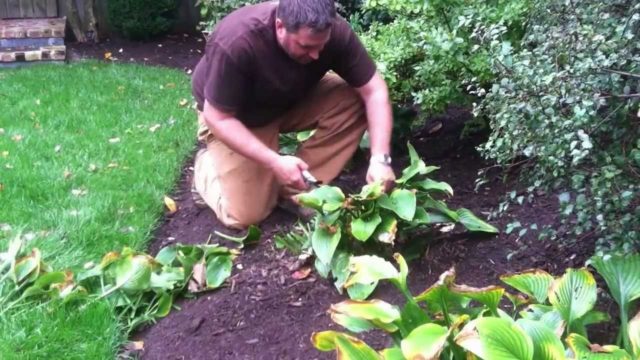
Proper care of the hosta after planting is the key to her health and decorative appearance
What other ways of breeding hosts are there?
The most modern vegetative breeding method for hosts is considered "in vitro", or "in vitro". It is popular in nurseries specializing in supplying a large amount of varietal planting material to the market.
Reproduction of hosts using the "invitro" method is performed in two ways:
- Microcloning. In this case, a bud or shoot is separated from the mother plant, placed in an artificial environment and an optimal regime of humidity, temperature and light is created. A young plant develops in such conditions for a couple of weeks, after which it can be cloned again, separating the buds and cuttings and growing them in separate "test tubes". However, if, unfortunately, the mother of the host was the carrier of the virus, all descendants will also be infected.
- Meristemic reproduction. It is used when it is necessary to heal a mother plant affected by dangerous infections. It implies the secretion of the cells of the meristem tissue found in the kidneys from the host. New plants are grown from them in an artificial environment. They are carefully checked for infection, discarding those infected with viruses, and healthy ones subjected to further cloning.
Thus, hundreds of thousands of plant specimens can be obtained from one organ. However, it does not always happen that clones retain all the varietal characteristics of the parent host. Components of the built environment in which they are grown can induce hereditary changes in cells. Sometimes clones are so different from the mother plant that they are assigned the status of a new variety (an example is the host "June" - the result of microcloning of the "Halcyon" variety). This property is well known to breeders and is often used by them.
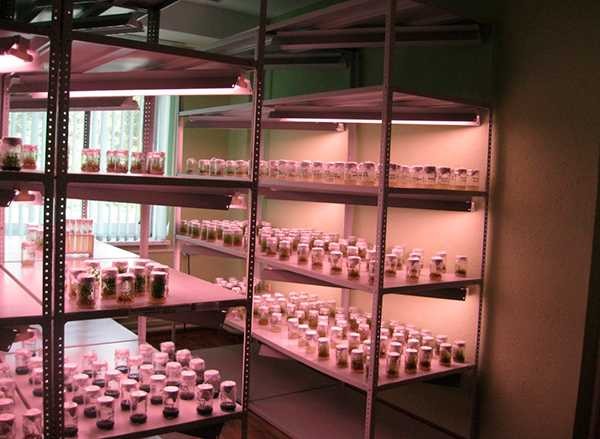
Reproduction "invitro" allows you to get a large amount of planting material from one plant organ in a short time
When buying a hosta that has been propagated "invitro", it is advisable to make sure that the root system is closed and the leaves are fully expanded. The latter will help determine whether it really matches the declared variety.
Conclusion
Hosta can be propagated in several ways, depending on the conditions and tasks set by the growers, the type and variety of the plant, as well as its inherent features. Reproduction of species of slow-growing host is most often performed by seeds, while in other cases the most common methods are bush division and cuttings. Occasionally they resort to rooting the leaf, but most often it fails. In industrial floriculture today, they use the method of growing hosts "in a test tube", conducting microcloning or obtaining new plants from the cells of the meristemic tissue.

